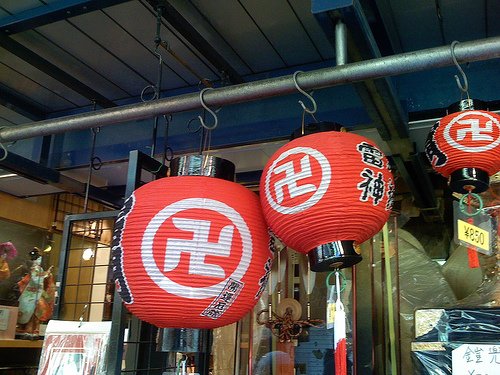(It looks like we were experiencing some problems with the site due to heavy server load, although it’s fixed now. If you should have a problem accessing the site, just try back in a few minutes and it should be okay.
Today was my ningen dokku or “human drydock,” an annual health check-up that tests every part of your body with assembly-line precision, a modern tradition that’s one reason why Japanese have such long life spans. While I was waiting for the next test I saw on the TV that Enola Gay pilot Paul Tibbets had passed away at the age of 92. He was the pilot who flew the plane that dropped the atomic bomb on Hiroshima, something that made him rather infamous here in Japan. It was an interesting moment to be an American surrounded by Japanese people, and the room suddenly seemed to get a little quieter around me — I probably had one of those big drops of sweat on my head like in anime. It can be hard to know how to feel about the bombing of Hiroshima, an event so terrible it’s hard to comprehend, yet it helped end a war that might have gone on for two more years and claimed another million lives. When I took my kids to see the excellent museums in Hiroshima I tried to present the complexity of these problems to them so they can make their own decisions about the past, since they’re both American and Japanese.
One of the most famous spots in Tokyo is Asakusa (ah-SAH-ku-SAH), home of the Senso-ji temple and a nice place to eat, drink or take part in a festival. Several famous corporations also happen to be located in the district, including the Bandai Company and Asahi Beer, which has a giant golden, er, shape on top of its headquarters which is supposed to remind you of the head on a cold beer…but everyone agrees it looks like a giant golden unko (poop), which the president of the company probably did for good luck purposes. Asakusa is a popular destination for foreign visitors to Japan, the last time I was there I was impressed to see a local shop owner barking prices at various customers in English, Chinese, German, French, Korean and occasionally Japanese. I’m sure more than a few foreign visitors have been surprised to see the beautiful lanterns that line Nakamise Dori with big, bright swastikas on them. They’re nothing to do with the Nazis, of course — the hooks go to the left, not to the right — but seeing to this symbol in daily life takes some getting used to. Look on any map in Japan and you’re sure to see many of these symbols indicating the presence of a Buddhist temple. Other symbols used on Japanese maps include a Japanese arch which marks Shinto shrines, and one of my favorites, the “onsen mark” or registered symbol indicating a volcanic hot springs. All of these characters are included in Japanese fonts and can be produced on any Mac or PC. (We’ve got a few cool T-shirts incorporating some of these designs on the site.)
From a certain point of view, the Japanese are all about “kenson,” or modesty, and there are many customs related to avoiding appearing boastful to others. Right off the bat, this tendency towards humility is built into the language, and to speak very polite Japanese is to alter between using words that lower your own status while raising up the person you’re talking to, actually changing the verb depending on whether you’re talking about yourself or the person you’re trying to be polite to. For example, the normal verb for to eat is taberu, but if you were speaking very polite Japanese, you’d use meshiagaru when referring to your teacher, boss, etc., and itadaku (as in “Itadakimasu!” which is said when you start a meal) when indicating your own lowly self. Modesty works like am umbrella, covering everyone in your respective in-group, and it’s common for a mother to talk “badly” (as seen from my American point of view) about their own children to other mothers in the neighborhood — they never study, the read manga all day, and so on — as a way of appearing self-effacing to others. I’ve noticed that Japanese modesty stops short when it comes to money, however, and like most people in the world, they know how to flaunt it when they’ve got it. I once taught English to the wife of the former president of the Sapporo Ramen Company, who lived in a traditional Japanese house that was so fine, I thought I had been transported back to Nara Period Japan. There’s a variety show on TV called Minna-san no Okage (“All Thanks To You”) which features a chair that rises along a big slope. Famous idols, actors and athletes come onto the show, make some small talk with the host, then the chair moves up the slope to indicate how much money they make annually. Poor swimsuit idol Yoko Kumada was stuck near the bottom of the hill, while famous actor and former baseball star Eiji Bando was happy to be carried all the way to the top, indicating his considerable wealth.
















